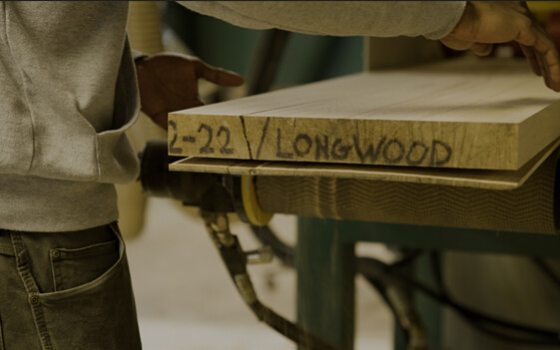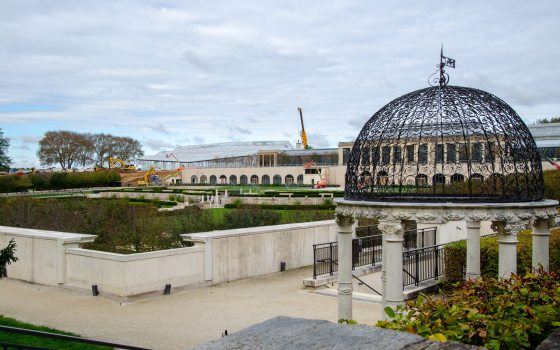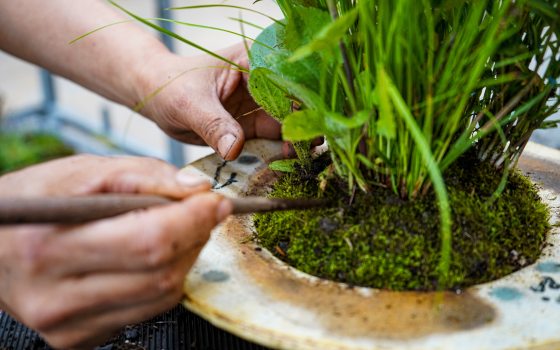Blending the visionary with the historic, Longwood Reimagined: A New Garden Experience is undoubtedly an endeavor of sweeping proportions—it is, after all, the most ambitious expansion, reimagination, and preservation of our Conservatory and surrounding landscape in a century. With the approaching fall 2024 opening of Longwood Reimagined, 17 acres of our Conservatory and grounds will feature new buildings, new indoor and outdoor gardens, new guest experiences, and many other grand realizations—and those grand realizations will be made thanks to the talent and creativity of many. Among those helping make Longwood Reimagined an upcoming reality is The Challenge Program, a local nonprofit that provides vocational training for Delaware’s youth to empower them with confidence, skills, and purpose—and the makers of custom furnishings that will grace the new buildings opening with Longwood Reimagined. The mission of—and the work done—by the Challenge Program is itself a thing of beauty.
Since 1995, the Wilmington, Delaware-based The Challenge Program has offered young people the opportunity to learn valuable construction skills, assistance in earning a high school diploma or GED, and job placement services. Founding Executive Director Andrew McKnight developed The Challenge Program from its infancy as a boat-building program, along the way forging partnerships with Delaware businesses, government agencies, contractors, and nonprofit organizations. Today, Challenge Program trainees gain on-the-job experience working on professional construction projects, primarily the rehabilitation of low-income housing for local government and nonprofit agencies and, periodically, creative projects that align with The Challenge Program’s mission. “Working with The Challenge Program on these exceptionally beautiful facets of Longwood Reimagined is not only a way to demonstrate our commitment to sustainability and Longwood’s inherent connection to trees,” shares Longwood President and Chief Executive Officer Paul B. Redman. ”It’s also a way to support this exceptional community program, and we are proud to be part of their story as well.”
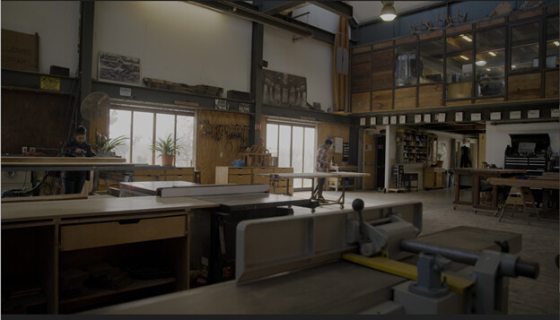
The shop in The Challenge Program’s Construction Training and Education Center, built by Challenge Program trainees 10 years ago almost entirely out of reclaimed material. Photo provided by FreshFly.
For Longwood Reimagined, The Challenge Program is creating custom furnishings using the wood of fallen hickory, catalpa, and ash trees from across Longwood’s acreage. These handcrafted pieces will be proudly placed in the new 1906 Restaurant by way of a host desk, private dining tables, a farm table and benches, and a seasonal table; in the form of bonsai display cases in our Bonsai Workshop; and as benches, coffee tables, and a conference table in The Grove—the central hub for staff, students, and volunteers. “We have always been committed to sustainability and working with sustainably sourced lumber,” shares McKnight. “Working on pieces for Longwood using lumber from the Longwood property in the first place is sustainably sourced in the best way and aligns perfectly with our mission.”
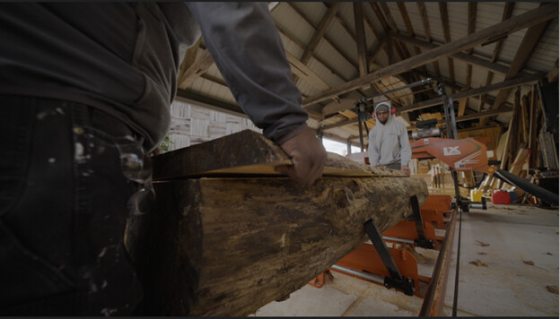
Trainees in The Challenge Program pre-apprentice program stack planks cut on their sawmill. Photo provided by FreshFly.
A team of 25 trainees has been working on these pieces for more than a year, beginning with prototyping the pieces and collaborating with Longwood staff and WEISS/MANFREDI Architecture/Landscape/Urbanism along the way to achieve a desired aesthetic. A light wood with a clean, uniform appearance, ash is being used for the bonsai display cases, while catalpa and hickory are being used for the restaurant pieces, chosen by WEISS/MANFREDI for their unique character.
This work is no small—nor short—feat. Upon receiving the logs from Longwood, The Challenge Program cut the logs and then air-dried them for eight months to bring the moisture level down from 80 percent to 25 percent. From there, the logs were put into a kiln to take the moisture level down to about 10 percent—its final moisture content. While ash takes about one to two weeks to kiln-dry, the hickory and catalpa takes about a month. “Using sourced wood versus wood purchased from a wholesaler, for example, is a very different process,” shares McKnight. “You end up with a much more uniquely finished piece that looks like nothing else. The process itself is a lot more hands-on and very rewarding.”
With the upcoming opening of Longwood Reimagined, we’re also looking forward to offering a selection of items crafted by The Challenge Program available for purchase in The Garden Shop.
The use of fallen trees is just one sustainable practice that is part of our Longwood Reimagined project. Learn about what other practices we are incorporating—and more about The Challenge Program—in this video by Freshfly.
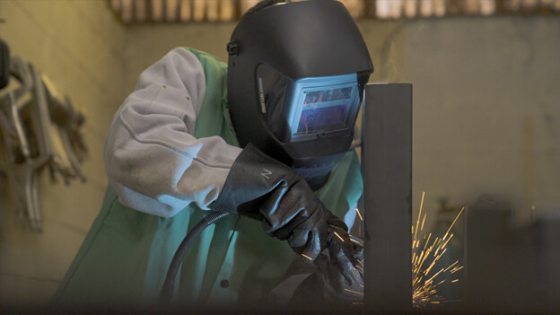
The Challenge Program trainees learn welding in addition to woodworking and basic construction. Photo provided by FreshFly.
As The Challenge Program continues to work on crafting these pieces, we grow ever more excited for the upcoming realization of Longwood Reimagined … and we grow ever more grateful for the many artisans, such as those from The Challenge Program working towards that realization and making such incredible contributions along the way.
